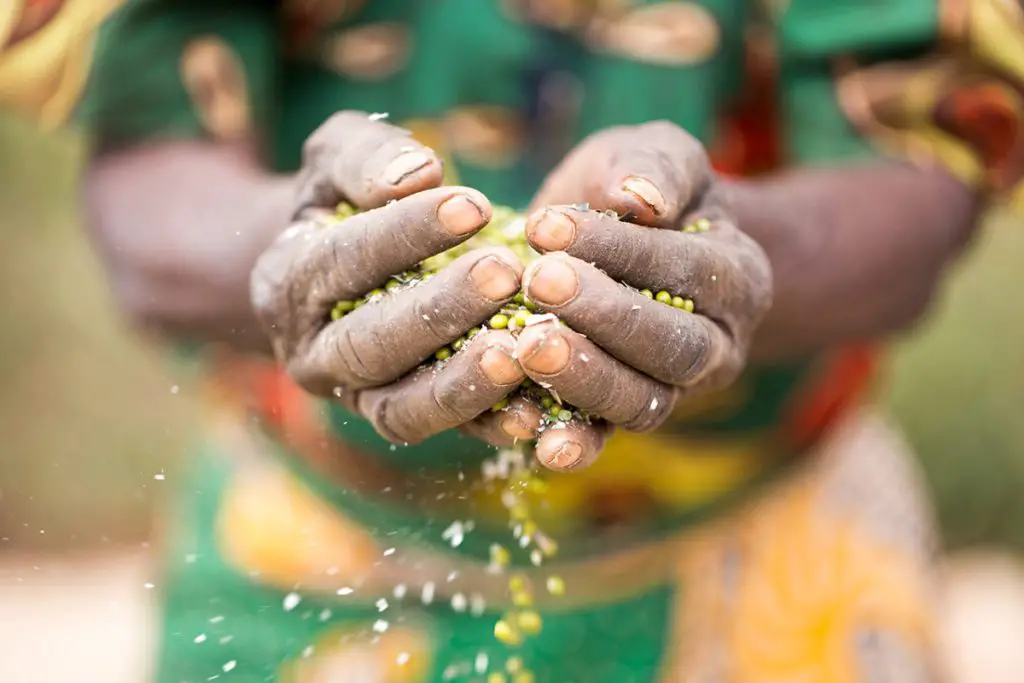- Africa’s new dawn: the rising role of digital and AI in agriculture
- Can Dangote Refinery Transform Africa Energy Ambition
- Gallup Survey: 80 per cent of Kenyan Workers Are Disengaged and Seek New Opportunities
- Madagascar Man Freed from 5KG Tumor After 15-Year Struggle
- How women in Africa are perceived and treated
- Sugar consumption in Kenya to Increase to 1.23 Million Tonnes
- Can Somalia and Turkey Oil deal Bring Change in Somaliland
- Remittances to Kenya dropped to $371.6 million in June, marking a six month low
Browsing: Food and Agricultural Organisation (FAO)
Worse still, the institute points to a much deeper conspiracy to force African farmers to buy agro-inputs from large corporations. In its report, the Oakland Institute says AGRA ‘imposes a regime in which farmers lose power over their own seeds and are forced to buy them back from large corporations year after year.’
“This system may also contribute to the marginalization of women.9 million smallholder farmer households, who are witnessing increased food security through AGRA’s direct interventions,” reads the report in part.
Then there is the matter overarching matter of climate change. The Food and Agriculture Organization (FAO) warns that the use of synthetic nitrogen fertiliser will increase nitrous oxide emissions, which increase the atmospheric temperature significantly.…
The agricultural transformation in Sierra Leone has demonstrated that delivery changes in traditional sectors may significantly impact food production when implemented effectively and under the appropriate circumstances.…
The Food and Agriculture Organization of the United Nations (FAO drought in the horn of Africa) estimates that over $138 million in urgent funding is needed to assist 1.5 million vulnerable people in rural communities in the Horn of Africa whose fields and pastures have been hard hit by an extended drought.
FAO made the announcement while it released a comprehensive response plan calling for a range of support for agriculture in the region.
The organization revealed that the region, which is already prone to food insecurity associated with weather extremes, natural resource limitations, and conflict, the COVID-19 pandemic, and the 2020-21 locust invasion, has stretched the coping capacities of rural communities to the limit, undermining agricultural productivity.
Now the third season of drought driven by La Niña is raising concerns that a large-scale hunger crisis could break out if the region’s food-producing rural communities do not receive adequate help …
East Africa has since late 2019 been fighting swarms of desert locusts which have posed a serious threat to crops and grazing across the region.
The locust plague In Kenya is the worst in 70 years. In the last two months, new swarms have been breeding and hatching leaving farmers devastated as they try to cope with the negative effects from previous pests not to mention the dry spells and floods that hit the region further destroying crops.
“We expect the worst if the young hatch in March and April,” Kelvin Shingles, Kenya Country Director for German Agro Action (Deutsche Welthungerhilfe) said in a press release.
In Ethiopia, Somalia and Kenya, it is reported that up to 38 percent of cropland and 48 percent of pastureland have been affected. 69 percent of households have also suffered losses due to the plague according to the Southern Africa Food and …
The African Export-Import Bank (Afreximbank) approved a $400-million revolving global credit facility agreement for the Export Trading Group (ETG).
Export Trading Group (ETG) is among the largest and fastest-growing integrated agricultural conglomerates in Africa.
The funds will address key challenges faced by African agricultural exporters, aggregating large values of produce in order to enable small and medium-scale enterprises(SMEs) access to regional and international markets.
The agreement will not only allow ETG to keep playing its vital role in the agri-foods supply chain of efficiently connecting African farmers to markets but also expand access to key inputs to boost agricultural productivity in a continent with tremendous but yet unrealized potential.
Africa spent over $90 billion on food imports in 2019 despite possessing up to 60 per cent of the world’s remaining arable land according to Afreximbank.
According to the Food and Agriculture Organization (FAO), Africa’s agricultural production of up to 50 …
The Ethiopian Investment Commission (EIC) announced that the country earned $103 million from export generated by industrial parks. The gain is a 40 percent increment compared to last year’s performance recorded at the same period.
According to Abebe Abebayehu, Ethiopia Investment Commissioner, 70 percent of the planned earning from industrial parks during the stated period had been accomplished. He further noted that footwear and other leather products, as well as textile and apparel have been exported to Europe, USA, Asia and other export destinations. Statistics from Food and Agricultural Organisation (FAO) ranks Ethiopia the 5th in the world and number one in Africa with the most cattle inventory.
Mr. Abebe, stating that industrial parks across the country have created employment for over 70,000 workers, said Ethiopia has been able to attract . (https://restorehealthky.com) 5 billion foreign direct investment in the mentioned nine months.
However, the commissioner said, …






![Africa: Focus on transforming agricultural practices to boost food production Africa must look to improve and transform its agricultural practices to increase food production for food security and economic growth [Photo/Silvapinto] www.theexchange.africa](https://theexchange.africa/wp-content/uploads/2022/08/dreamstime_xl_116738955-scaled-1-1024x682.jpg)


